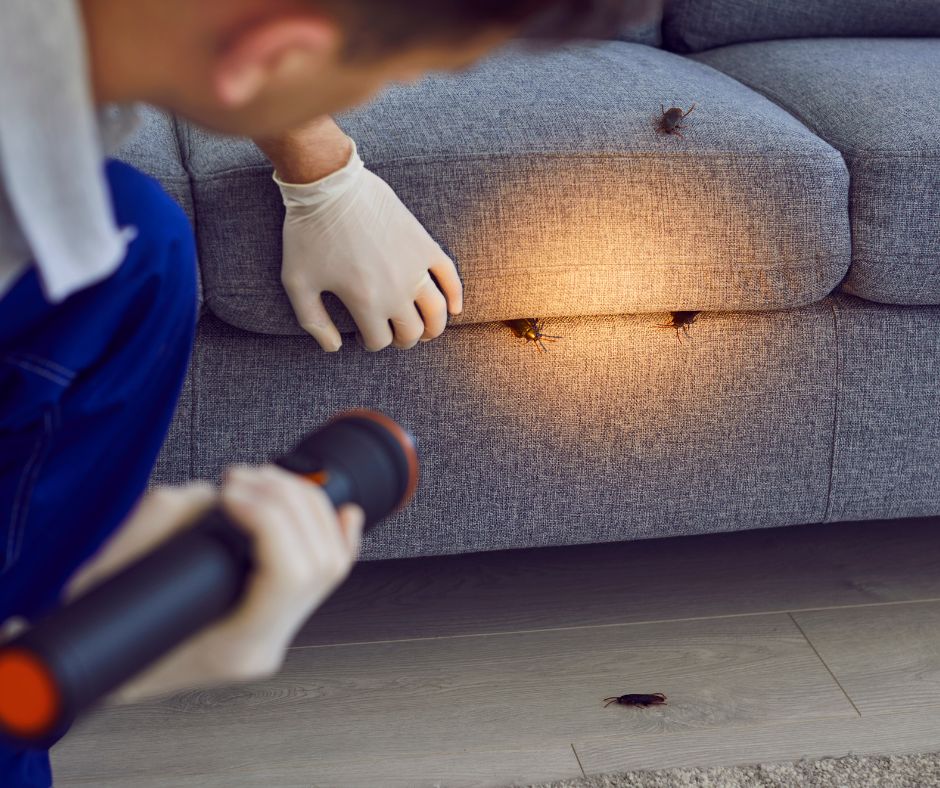Termite Extermination with Port Charlotte Pest Control Service
Comprehensive Guide to Comprehending Pest Control Approaches and Their Therapy
Understanding insect control approaches is necessary for reliable monitoring of undesirable microorganisms that pose risks to health, farming, and home. This detailed guide will check out numerous strategies, including chemical solutions, biological strategies, and mechanical methods, all under the umbrella of Integrated Parasite Monitoring (IPM) As we examine these approaches, it comes to be increasingly clear that the option of method can significantly affect both human rate of interests and eco-friendly balance. What elements should be taken into consideration when choosing the appropriate parasite control method for a certain circumstance? The response might cause more sustainable methods than one could initially think.
Review of Bug Control Approaches
Bug control approaches include a variety of methods developed to manage and remove undesirable organisms that can damage human wellness, agriculture, and residential or commercial property. Effective insect monitoring is essential for maintaining the stability of environments and making sure the security of food products. These methods can be generally categorized right into 3 main approaches: social, mechanical, and biological controls.

Social control includes customizing farming methods or ecological conditions to reduce insect facility and reproduction. Mechanical control relies on physical obstacles or tools to prevent pest access or straight eliminate them.
Organic control makes use of all-natural predators, bloodsuckers, or microorganisms to control pest populations. This technique stresses ecological equilibrium and can include presenting advantageous insects, such as ladybugs or predacious nematodes, to manage bug visibility.
Integrated bug management (IPM) combines these methods, using a holistic technique that emphasizes prevention, monitoring, and liable administration. By employing a mix of these approaches, bug control can be a lot more lasting and efficient, reducing reliance on chemical interventions while guarding human health and wellness and the atmosphere.

Chemical Parasite Control Solutions
A selection of chemical bug control services are available, giving efficient options for managing insect populaces when various other methods may fall short. These options mostly consist of pesticides, herbicides, fungicides, and rodenticides, each developed to target particular bugs while lessening injury to non-target microorganisms.
Insecticides are specifically effective against a range of bugs, including ants, cockroaches, and termites, and can be identified as call or systemic agents. Get in touch with pesticides kill bugs on get in touch with, while systemic insecticides are taken in by plants, making them toxic to insects that feed upon them. Herbicides are used to regulate undesirable vegetation, whereas fungicides are crucial for managing fungal conditions that can damage plants and ornamental plants.
Rodenticides, developed for rodent control, are offered in different formulations, including lures and tracking powders. It is vital to follow label guidelines meticulously to make certain safety and efficiency. In addition, integrated bug management (IPM) concepts must be used, combining chemical services with cultural, mechanical, and organic techniques for sustainable pest control. This holistic approach not just boosts pest administration efficiency yet additionally decreases prospective ecological influences related to chemical usage.
Biological Parasite Control Strategies
Biological insect control techniques offer an eco-friendly alternative to chemical techniques by making use of natural killers, parasites, or virus to handle parasite populations. This method leverages the eco-friendly partnerships between microorganisms, promoting a balanced environment while decreasing chemical deposit in the setting.
One of the most typical organic control approaches involves the intro of all-natural enemies. As an example, ladybugs are utilized to control aphid populations, while parasitic wasps can target look at this site caterpillars and various other insects. These natural predators successfully decrease pest numbers without harming beneficial bugs.
Furthermore, microbial representatives such as bacteria, fungis, and infections are used to contaminate and kill particular insects. Bacillus thuringiensis (Bt), a normally happening bacterium, is widely made use of to manage caterpillars and various other larvae, showcasing the efficiency of microbial insect control.

Physical and Mechanical Approaches
Regularly used in integrated pest monitoring methods, physical and mechanical methods serve as effective devices for regulating parasite populations without making use of chemicals. These methods count on physical barriers, catches, and other mechanical tools to avoid or get rid of insects, making them environmentally pleasant choices.
Physical approaches include using barriers such as insect netting, displays, or row covers that physically obstruct bugs from accessing plants. This is especially helpful in agricultural setups where crop security is crucial. Additionally, habitat control, such as eliminating particles and standing water, can reduce parasite breeding websites, therefore minimizing infestations.
Mechanical methods encompass catches, which can be created to capture certain parasites. Sticky traps and scent catches are typical instances that entice and preserve pests, facilitating surveillance and control. Vacuuming is one more mechanical strategy, effective for removing pests from indoor atmospheres, especially in cases of infestations.
Preventative Pest Management Strategies
Reliable preventative pest administration techniques are crucial for preserving healthy and balanced settings and lessening pest-related issues before they emerge (Pest Control in Port Charlotte, FL). These strategies concentrate on proactive steps that decrease the chance of best site pest invasions by resolving the origin

An additional important method involves proper landscaping methods (Pest Control in Port Charlotte, FL). Keeping greenery trimmed and away from structures can lower harborage locations for pests. Likewise, applying incorporated pest monitoring (IPM) techniques that include monitoring pest populations and using biological controls can cultivate a balanced ecological community that naturally reduces pest numbers.
Education and learning and training for team and locals on identifying early indications of insect task are additionally crucial elements of an effective preventative program. By cultivating an atmosphere this page of awareness and alertness, organizations and property owners can considerably enhance their pest administration efforts and safeguard their rooms versus future invasions.
Final Thought
Employing an Integrated Bug Management (IPM) framework permits for the sustainable monitoring of pests while reducing eco-friendly influence. Ultimately, a comprehensive understanding of these varied parasite control strategies is crucial for accomplishing effective results in insect monitoring campaigns.